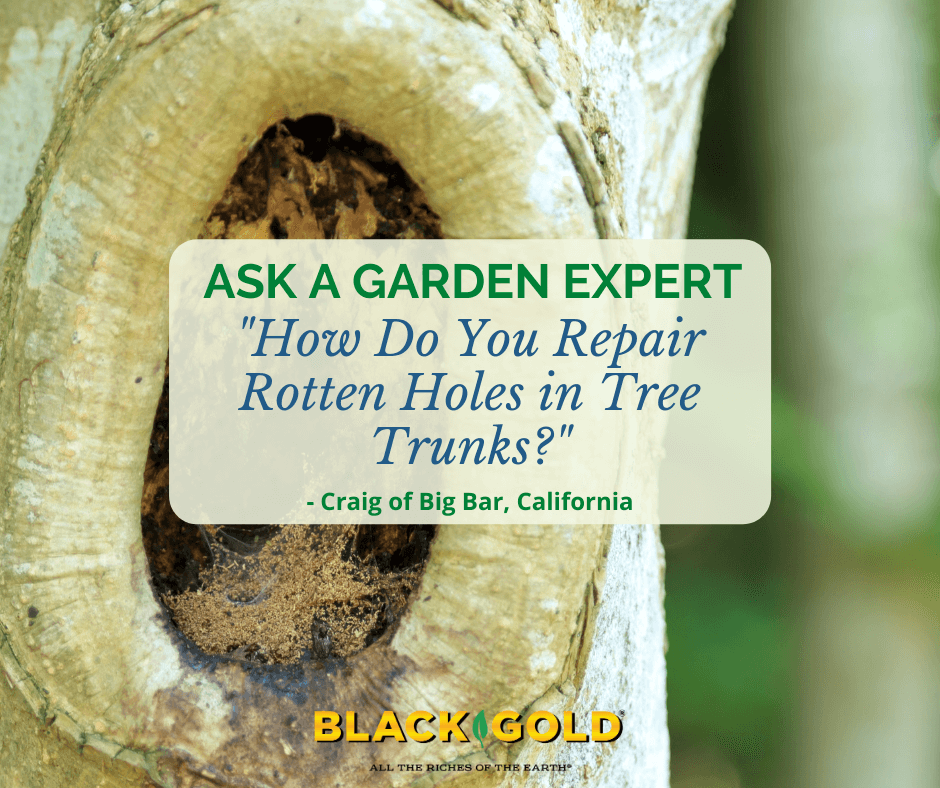
“My pear tree has some large rotten holes on the trunk. What can I fill these up with (concrete)?” Question from Craig of Big Bar, California
Answers: That is an excellent question. The key is cleaning up trunk holes to stop the rotting process. Concrete won’t cut it (it’s also a chainsaw hazard), but there are some practices and products that will. Wound healing and closure is the goal. Here are my suggestions for treating your peartree trunk holes in four steps.
- Gently scrape away the soft, rotted wood in the holes to reveal the living tissue. Take care not to cut into any protective firm wood or living tissue! I recommend wearing Kevlar gloves to protect against potential cuts and using a planting knife to remove any bulk, loose deadwood, and a wood-shaving tool to scrape away dead wood closer to the living tissue. Clean your tools with a 10% bleach solution, before and after work, to avoid potentially spreading disease.
- Once the holes are free of dead tissue you can either leave them to naturally heal, if the damage is just peripheral, or you can treat them with an antifungal spray and effective tree-wound sealer.
- If you want the extra protection of a fungicide and sealer*, I recommend first spraying the area with liquid copper fungicide spray. Once it has dried, try using quartz-based Tree Bandage, which is promoted by foresters and is said to be breathable and truly protective.
- If you want to fill the hole to keep animals out, I suggest using a high-powered stapler to stable a piece of strong screen over the hole. But, if you like animals this step is unnecessary.
*Do not use petroleum-based wound paints. Studies have shown that tree wound paints containing petroleum, latex paint, shellac, and asphalt do not promote healing and wound closure. (Click here for an article about the myths and concerns regarding wound paints.)
Here are other precautionary measures that can be taken to stop any fungal disease:
- Free the root crown of excess soil and mulch (tree volcanos), if needed.
- Cutaway any dead or dying branches, being sure to clean tools before and after.
I hope that these tips help!
Happy gardening,
Jessie Keith
Black Gold Horticulturist

